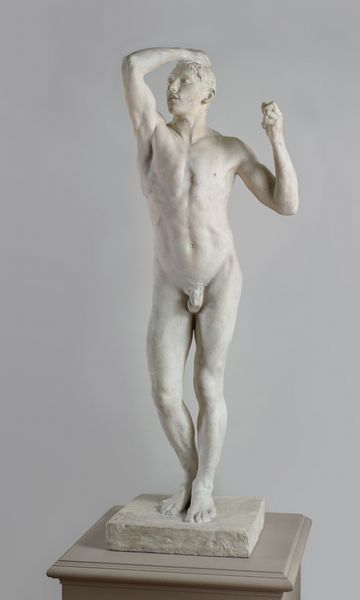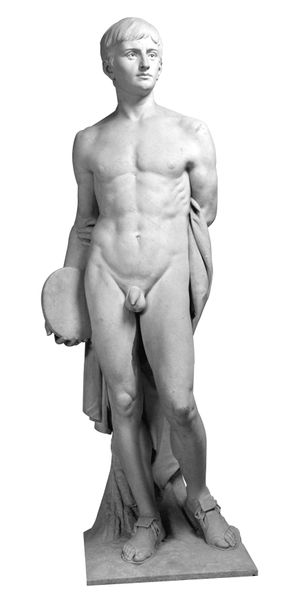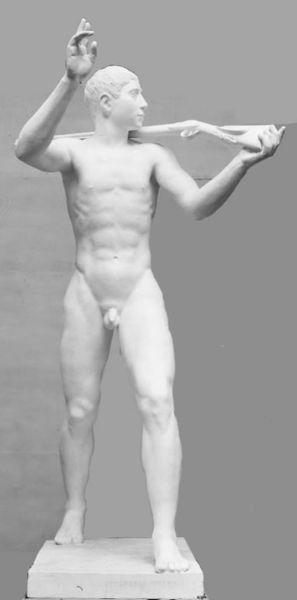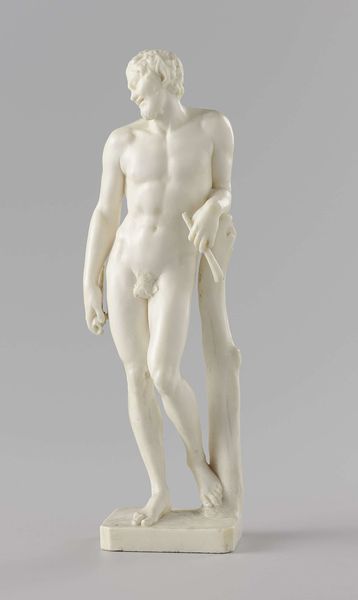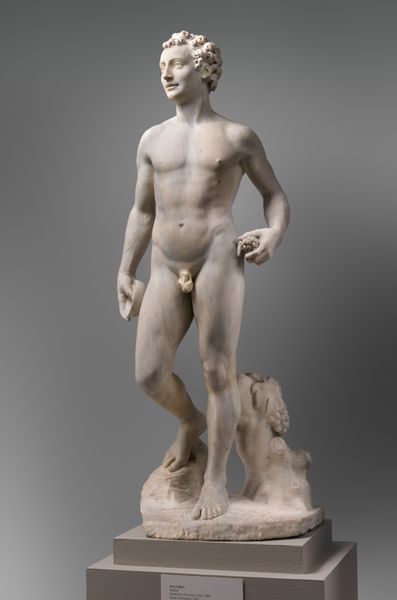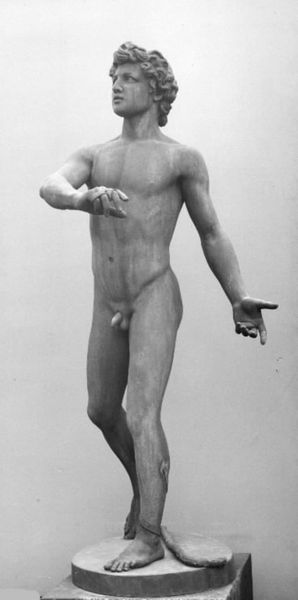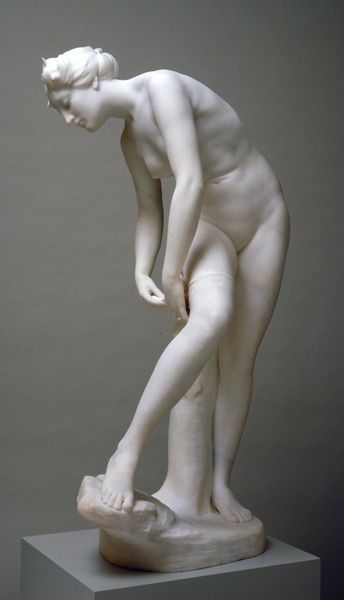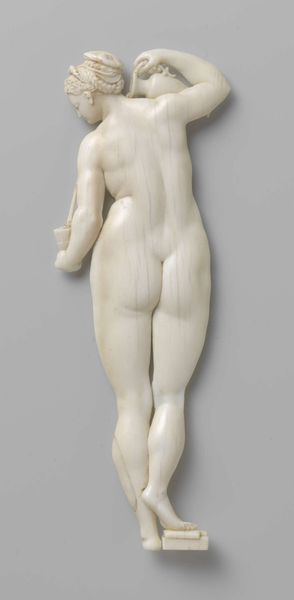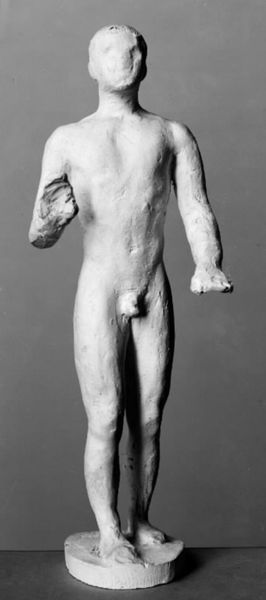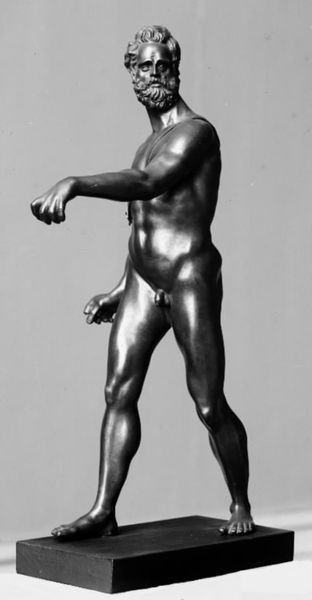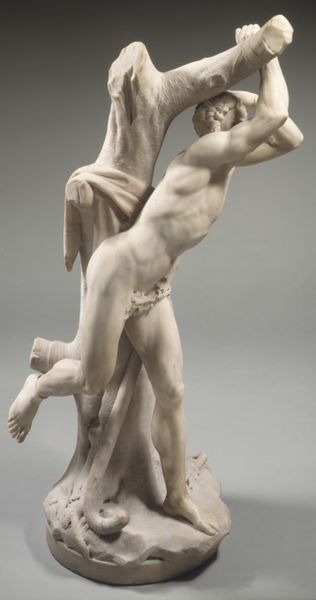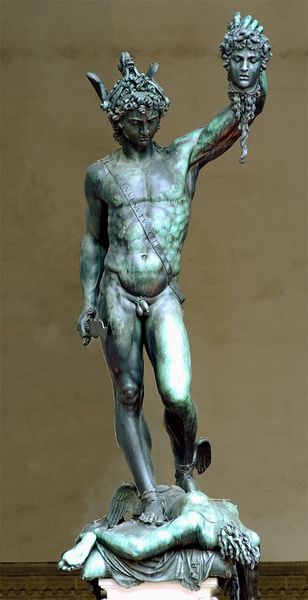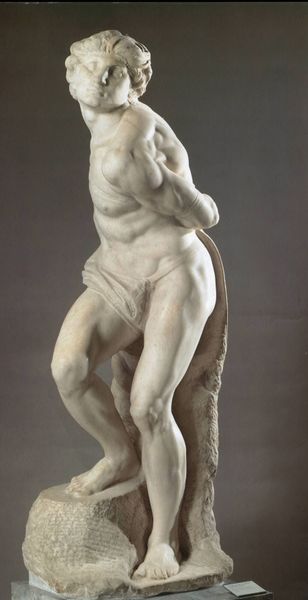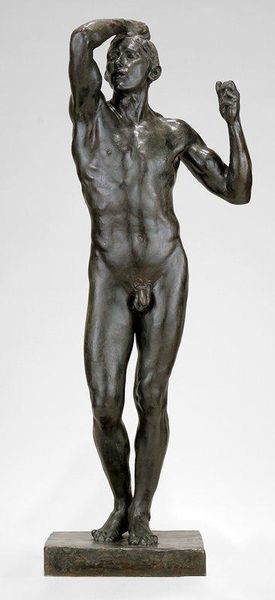
Copyright: Public domain
Curator: This is Auguste Rodin's "Age of Bronze," a sculpture rendered in bronze around 1870. Editor: My immediate impression is of striving. It feels caught between hope and despair; the pose itself is so incredibly dynamic yet held, almost tragically. Curator: Yes, and it's vital to remember the sheer scandal this work produced. The critics accused Rodin of casting the sculpture directly from a live model because it seemed too life-like. This tells us so much about the bronze casting process, doesn't it? The labor involved, the material choices... Editor: Indeed. The realistic form does carry a striking resonance. His stance, the tilt of his head, speaks of profound, almost mythological awareness. You sense an Adam expelled from Eden, perhaps? The symbolic weight of newfound consciousness hangs heavy. Curator: Exactly. The early reception reveals anxiety about industrial methods threatening "true" art. Was it "made" or simply copied? And where did this bronze even originate from? Was it newly mined or a recast of older scraps melted together to start fresh? Editor: Thinking of this tension... the sculpture does exist between those realms, and bronze itself serves as such a wonderful symbolic device. Through fire, one thing is changed into another—death, rebirth. The questions Rodin raises here extend far beyond technique and into philosophical considerations of human existence and fate. Curator: Certainly, Rodin aimed to capture not just surface appearance but the inner life made visible through precise observation of human form and movement. A form revealed by craft, shaped by artistic vision, refined over material realities. Editor: That's well-stated. In studying such objects and unpacking their loaded symbolisms, it seems we constantly rediscover what it means to be both a human and part of larger forces far older than ourselves. Curator: Yes, examining both the sculpted bronze itself, and all its origins and the social anxieties around its creation gives insight into broader historical perspectives on art and manufacture during Rodin's time. Editor: A powerful work that inspires multiple avenues for contemplation and reminds us that art is an ongoing conversation.
Comments
No comments
Be the first to comment and join the conversation on the ultimate creative platform.
